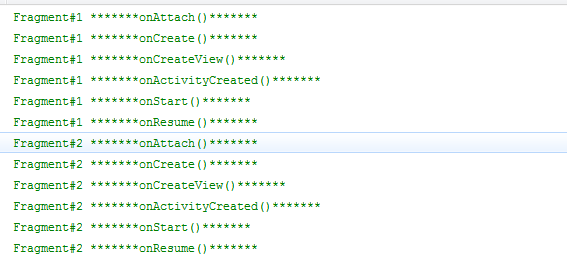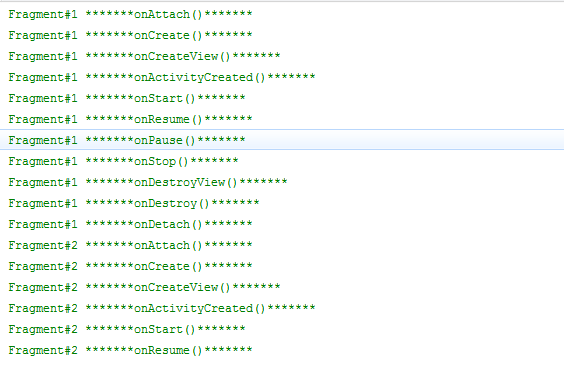在Android中,对Fragment的操作都是通过FragmentTransaction来执行。而从Fragment的结果来看,FragmentTransaction中对Fragment的操作大致可以分为两类:
- 显示:
add() replace() show() attach() - 隐藏:
remove() hide() detach()
对于每一组方法,虽然最后产生的效果类似,但方法背后带来的副作用以及对Fragment的生命周期的影响都不尽相同。
add() vs. replace()
只有在Fragment数量大于等于2的时候,调用add()还是replace()的区别才能体现出来。当通过add()连续两次添加Fragment的时候,每个Fragment生命周期中的onAttach()-onResume()都会被各调用一次,而且两个Fragment的View会被同时attach到containerView。
同样,退出Activty时,每个Fragment生命周期中的onPause()-onDetach()也会被各调用一次。
但当使用replace()来添加Fragment的时候,第二次添加会导致第一个Fragment被销毁,即执行第二个Fragment的onAttach()方法之前会先执行第一个Fragment的onPause()-onDetach()方法,同时containerView会detach第一个Fragment的View。
show() & hide() vs. attach() & detach()
调用show() & hide()方法时,Fragment的生命周期方法并不会被执行,仅仅是Fragment的View被显示或者隐藏。而且,尽管Fragment的View被隐藏,但它在父布局中并未被detach,仍然是作为containerView的childView存在着。相比较下,attach() & detach()做的就更彻底一些。一旦一个Fragment被detach(),它的onPause()-onDestroyView()周期都会被执行。
同时Fragment的View也会被detach。在重新调用attach()后,onCreateView()-onResume()周期也会被再次执行。
remove()
其实看完上面的分析,remove()方法基本也就明白了。相对应add()方法执行onAttach()-onResume()的生命周期,remove()就是完成剩下的onPause()-onDetach()周期。
总结
除了上面这些核心的api外,FragmentTransaction还提供了更多的方法以丰富Fragment的操作,如为Fragment的显示和隐藏添加动画。具体使用方法可以参阅api文档。
http://developer.android.com/reference/android/app/FragmentTransaction.html






**粗体** _斜体_ [链接](http://example.com) `代码` - 列表 > 引用。你还可以使用@来通知其他用户。